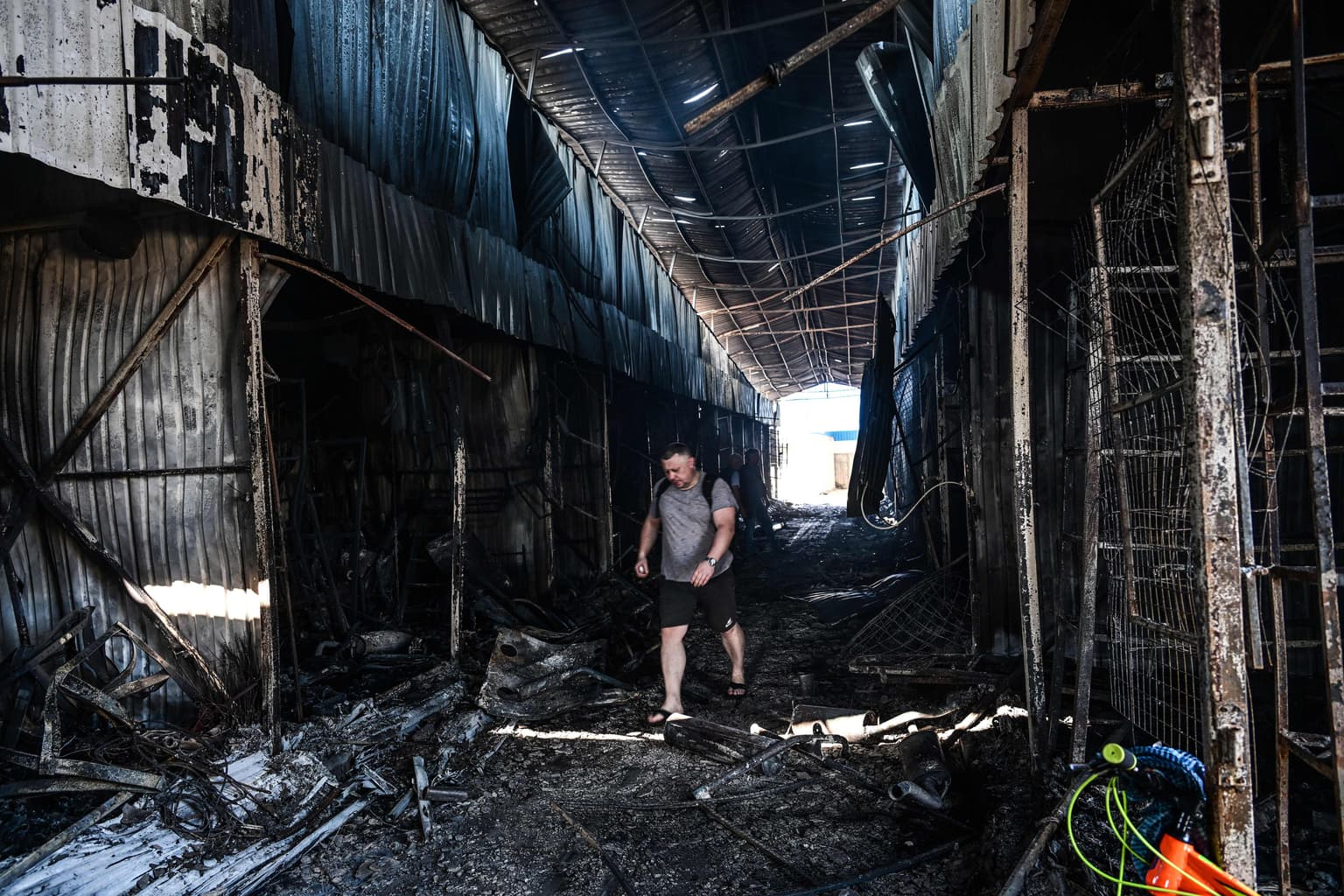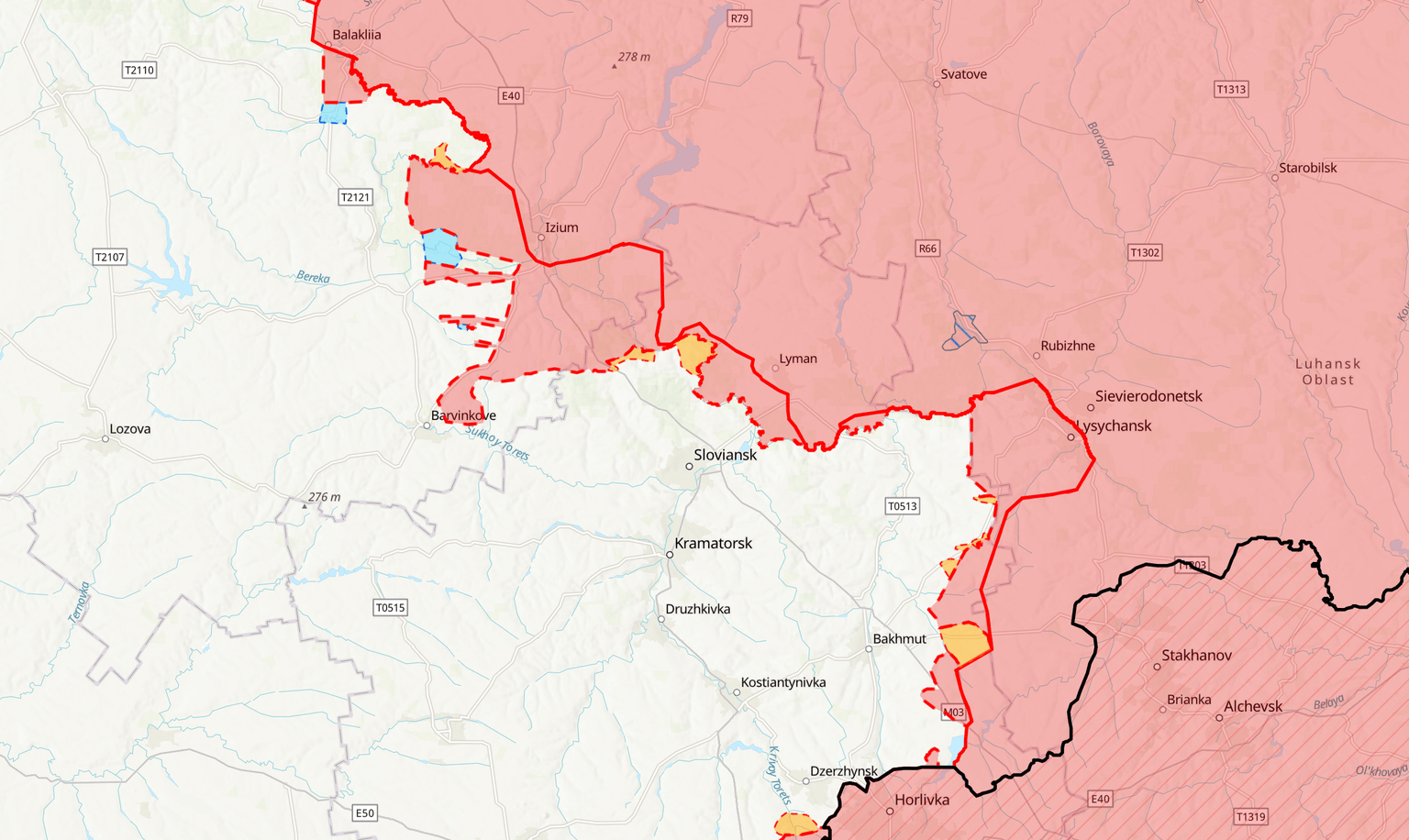Sloviansk under heavy fire as Russia’s war enters new phase

Mayor of Sloviansk Vadym Liakh on July 6 urged remaining residents to evacuate, as the city appears to be Russia’s next target in its plans to capture Donetsk Oblast and civilian evacuation becomes increasingly difficult.
After seizing the city of Lysychansk on July 3, Ukraine’s last major stronghold in Luhansk Oblast, Russia is expected to focus on gaining full control over neighboring Donetsk Oblast.
Seizing the entirety of Donbas, the industrial heartland comprising Donetsk and Luhansk Oblasts, has been Moscow’s war goal since failing to capture Kyiv in March.
As part of that goal, over the past two weeks, Russian forces have intensified their shelling of Sloviansk, a small city 75 kilometers from recently besieged Lysychansk.
On July 5, Russian forces struck Sloviansk’s central market, as well as several residential areas, killing at least two people and injuring seven others, according to the mayor. Since the start of Russia’s full-scale war, 17 civilians have been killed in Sloviansk and another 67 injured.
Russian forces have begun shelling Sloviansk using cluster bombs, causing higher casualties, Mayor Liakh said on July 6. Known to have a “wide-area effect” and for being imprecise, the use of cluster bombs directed against civilians is banned under the Geneva Convention.
The mayor also said that some 23,000 residents continue to live in Sloviansk, around a fifth of its pre-war population of approximately 110,000.
The city no longer has centralized water supply and one-third of Sloviansk consistently lacks electricity, as Russian shelling makes it difficult for workers to restore power lines, according to the mayor.
“Artillery is already hitting the city,” Liakh said on Ukrainian TV on July 5, as he urged residents to evacuate as soon as possible. But routes out of the city are becoming more dangerous every day.
Located in the northern part of Donetsk Oblast, nearly half of which is currently controlled by Russia, Sloviansk is an important railway junction and logistics hub in the region.
Sloviansk was the first city to be seized when Russia first invaded Ukraine in 2014 and was briefly occupied by Russia-backed militants before being liberated by Ukraine’s military three months later on July 5, 2014.
The city is now preparing for a battle that is likely to be as bloody as the battle for Sievierodonetsk and Lysychansk.
And the battle for Sloviansk is fast approaching, the U.K. Defense Ministry says. Russian forces are likely located about 16 kilometers north of the city, and there is “a realistic possibility that the battle for Sloviansk will be the next key contest in the struggle for the Donbas,” the ministry said in its July 6 intelligence update.

Mayor Liakh reported that Russian forces have been launching assaults toward the city but have so far failed to make territorial gains. Nonetheless, Luhansk Oblast Governor Serhiy Haidai reported that Russian troops are making their way into Donetsk Oblast to join their forces already in the region.
While Moscow’s forces are expected to use Lysychansk to grind into the neighboring region, Liakh said it would be a challenge for them to cross the Siversky Donets River that surrounds Ukrainian-held territories in Donetsk Oblast.
The Institute for the Study of War (ISW) said on July 5 that Russian troops are clearing Luhansk Oblast’s Sievierodonetsk and Lysychansk to prepare for future offensives to the west – toward the direction of Sloviansk.
The General Staff of Ukraine’s Armed Forces reported on July 6 that Russian forces are improving their combat tactics to advance toward Sloviansk while engaging the areas near Krasnopillia and Bohorodychne in Donetsk Oblast with mortars, barrel and jet artillery.
While fears grow for civilians in Sloviansk as experts predict the strategic city to be the next hotspot of Russia’s war, Donetsk Oblast Governor Pavlo Kyrylenko also called on all remaining residents in the region to flee Donetsk Oblast.
As of July 6, Kyrylenko reported that Russia’s shelling and bombardment have killed at least 570 civilians and injured 1,494 others in the region, but he noted that the number of casualties in bombed-out cities of Mariupol and Volnovakha is “currently unknown.”
“Russia has turned the entire Donetsk oblast into a hot spot where it is dangerous to remain as a civilian,” Kyrylenko said.










